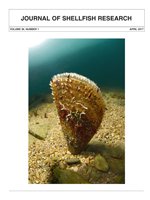Four previously published metrics for determining nutritional condition in decapods were evaluated for efficacy, specifically a serum protein index and three hepatopancreas-based indices (dry weight index, percent tissue dry weight, and relative weight). Using the Caribbean spiny lobster Panulirus argus (Latreille, 1804) as a model, lobsters were subjected to 5 wk of controlled diets in a laboratory-feeding trial. Three of the four indices detected significant differences between lobsters fed 15% or 100% of their daily maximum food intake, but lobster size and molt stage significantly influenced several metrics. Dry weight index of the hepatopancreas performed best, but relative weight of the digestive gland was the least affected by lobster size and molt stage. As both are destructive methods that require dissection of the lobster, these may not be useful for all studies. Hemolymph serum protein concentration is nondestructive and can be assessed rapidly in the laboratory or field, but it is strongly affected by molt stage. Thus, consideration of potential confounding factors is essential in choosing the proper measure of nutritional condition in studies of decapods.
How to translate text using browser tools
1 April 2017
Comparison of Methods for Determining Nutritional Condition in Spiny Lobsters
Benjamin C. Gutzler,
Mark J. Butler
ACCESS THE FULL ARTICLE

Journal of Shellfish Research
Vol. 36 • No. 1
April 2017
Vol. 36 • No. 1
April 2017
decapod nutrition
dry weight index
hemolymph protein
nutritional condition
Panulirus argus




